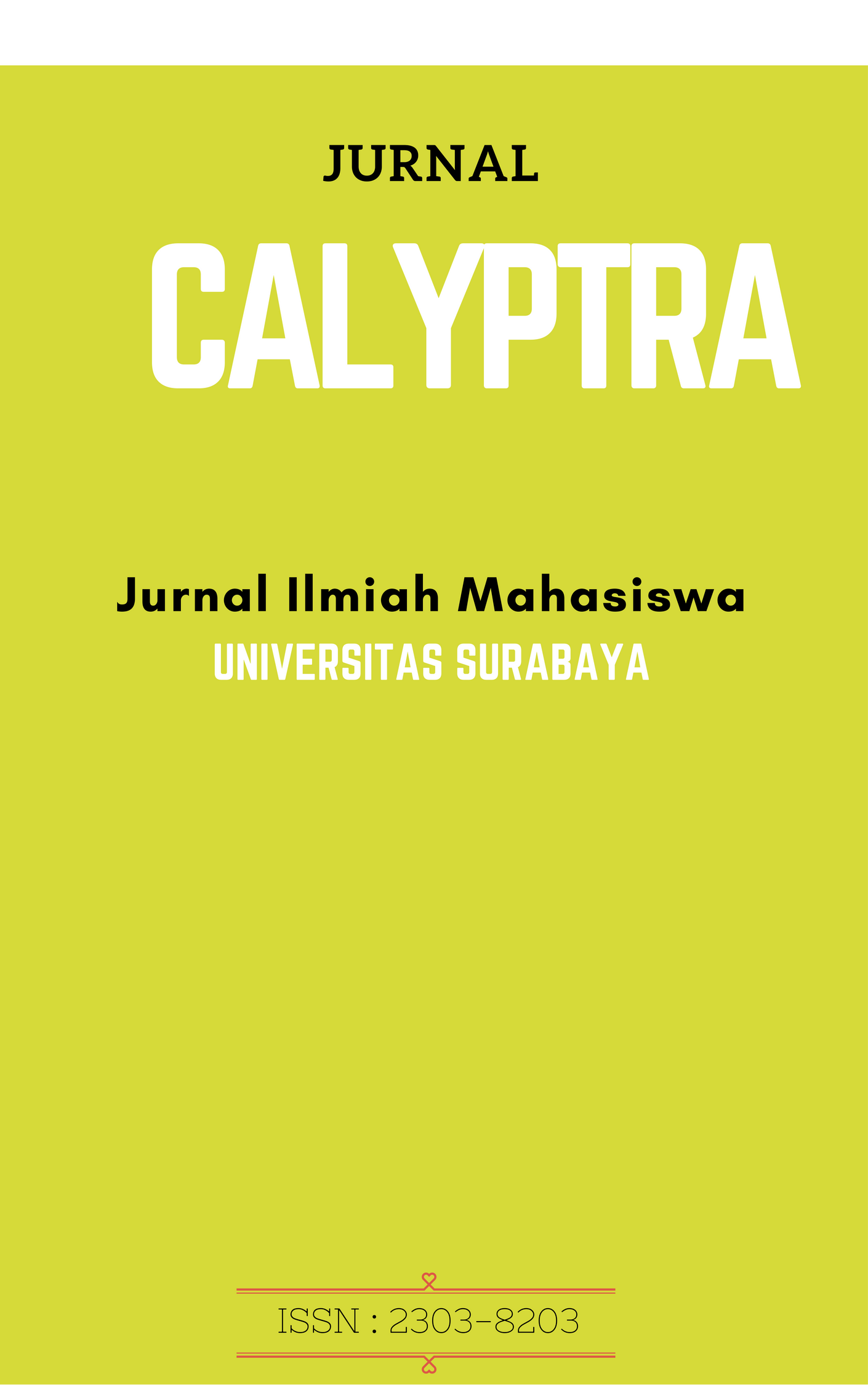PENYUSUNAN PANDUAN PELAKSANAAN QUALITY CIRCLE BERDASARKAN JOB CHARACTERISTICS MODEL DI PERPUSTAKAAN
 Abstract Views:
102 times
Abstract Views:
102 times
 PDF - FULL TEXT Downloads:
108 times
PDF - FULL TEXT Downloads:
108 times
Abstract
Abstrak – Penelitian ini bertujuan untuk mengetahui dimensi mana saja dari job characteristics model yang berpengaruh dalam motivasi kerja karyawan. Partisipan penelitian adalah karyawan departemen STIPLSP perpustakaan Universitas Surabaya. Data asesmen diperoleh dengan cara penyebaran angket job diagnostics survey. Hasil dari asesmen diketahui bahwa dimensi feedback pada FK. Sirkulasi, FK. Pangkalan Data dan FK. Digitalisasi serta skill variety pada FK. Sirkulasi merupakan dimensi yang belum memiliki nilai maksimal. Oleh sebab itulah dilakukan penyusunan panduan pelaksanaan quality circle dan rancangan program kerja. Panduan tersebut kemudian dilatihkan kepada karyawan. Berdasarkan proses intervensi maka dapat disimpulkan bahwa panduan pelaksanaan quality circle merupakan intervensi yang sesuai dan dibutuhkan oleh partisipan penelitian. Peningkatkan kedua dimensi tersebut akan lebih efektif jika disertai dengan penerapan rancangan program yang diusulkan.
Kata kunci: Perpustakaan, Job Characteristics Model dan Quality Circle
Abstract – The aim of this research is to determine which dimensions of job characteristics model that influence in employee motivation. Participants in this research were employees of the departement STIPLSP Surabaya University’s Library. Assessment data obtained with job diagnostic survey questionnaires. The result of assessment process showed that FK. Sirkulasi, FK. Pangkalan Data dan FK. Digitalisasi’s feedback has a low value categories. As well as FK. Sirkulasi’s skill variety. Because of these fact, guide of implementation of the quality circle and the work planning programs has been compiled. The conclusion of this research is guide of implementation of the quality circle is appropriate and required interventions for participants. Increasing both dimensions would be more effective if accompanied by adoption of the work planning programs.
Keywords: library, job characteristics model and quality circle.
Downloads
References
Kumar, A., Abbas, Q., Ghumro, I.A., & Zeeshan, A. (2012). Job characteristics as predictors of job satisfaction and motivation. Asian Journal of Bussines and Management Sciences, Vol. (1), No.4., 206-216.
Nurindriani, A. (2007). Jenis-jenis pelayanan untuk meningkatkan kualitas perpustakaan. 15 April 2015, dari http://digilib.itb.ac.id/files/disk1/615/jbptitbpp-gdl-atieknurindriani-30702-1-jenis2-l-s.pdf
Rodliyah, U. (2012). Perpustakaan Digital, dan prospeknya menuju resource sharing. Diunduh 10 April 2015, dari https://www.google.co.id/url?sa=t&rct=j&q=&esrc=s&source=web&cd=1&cad=rja&uact=8&ved=0ahUKEwiUrpLYltPJAhXClJQKHeSdDrwQFggcMAA&url=http%3A%2F2Fperpusnas.go.id%2FiFileDownload.aspx%3FID%3DAttachment%255CMajalahOnline%255CUmmi_Rodliyah_Perpust_Digital.pdf&usg=AFQjCNEBDF_7ZLWt65EjBH3mTv3TYJp85g&sig2=2fPMqwGVIxeduvOZXfearQ&bvm=bv.109395566,d.dGo
Rusmana, A. (2005). Pengembangan perpustakaan sebagai pendukung pembangunan masyarakat berkualitas dan produktif. http://eprints.rclis.org/9414/1/lib_development_agus_rusmana1.pdf
Syla, S. & Rexhepi, G. (2013). Quality circles: what do they mean and how to implement them?. International journal of Academic Research in Bussiness and Social Sciences 3 (12), 243-251.
Welekar, S. & Kulkarni, S. (2013). Quality circle to improve productivity. Journal of Egineering Reasearch and Application, Vol.3: 814-819.
Zabihi, M.R., Khanzadeh, H.E., Alipoor, N.R., & Malek, M. (2012). Job characteristics model of hackman and oldham in public and private sector in iran (modified model approach. International Kournal of Innovative Ideas, (12(2): 4-12.
Zare, R., Jajarmizadeh, M., & Abbasi, N. (2010). Relationship between job characteristics model (JCM) and learning organization (LO). World Applied Sciences Journal, 8(10): 1253-1259.
- Articles published in CALYPTRA are licensed under a Creative Commons Attribution-ShareAlike 4.0 International license. You are free to copy, transform, or redistribute articles for any lawful purpose in any medium, provided you give appropriate credit to the original author(s) and the journal, link to the license, indicate if changes were made, and redistribute any derivative work under the same license.
- Copyright on articles is retained by the respective author(s), without restrictions. A non-exclusive license is granted to CALYPTRA to publish the article and identify itself as its original publisher, along with the commercial right to include the article in a hardcopy issue for sale to libraries and individuals.
- By publishing in CALYPTRA, authors grant any third party the right to use their article to the extent provided by the Creative Commons Attribution-ShareAlike 4.0 International license.



